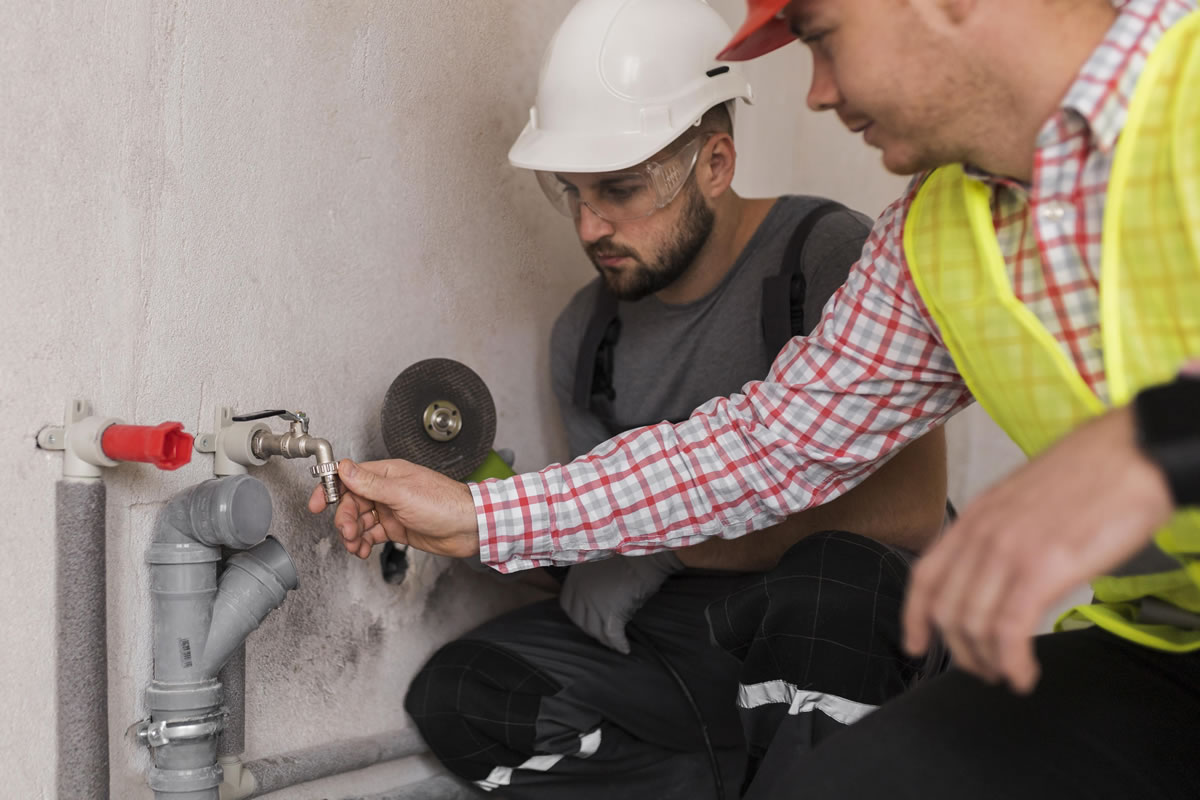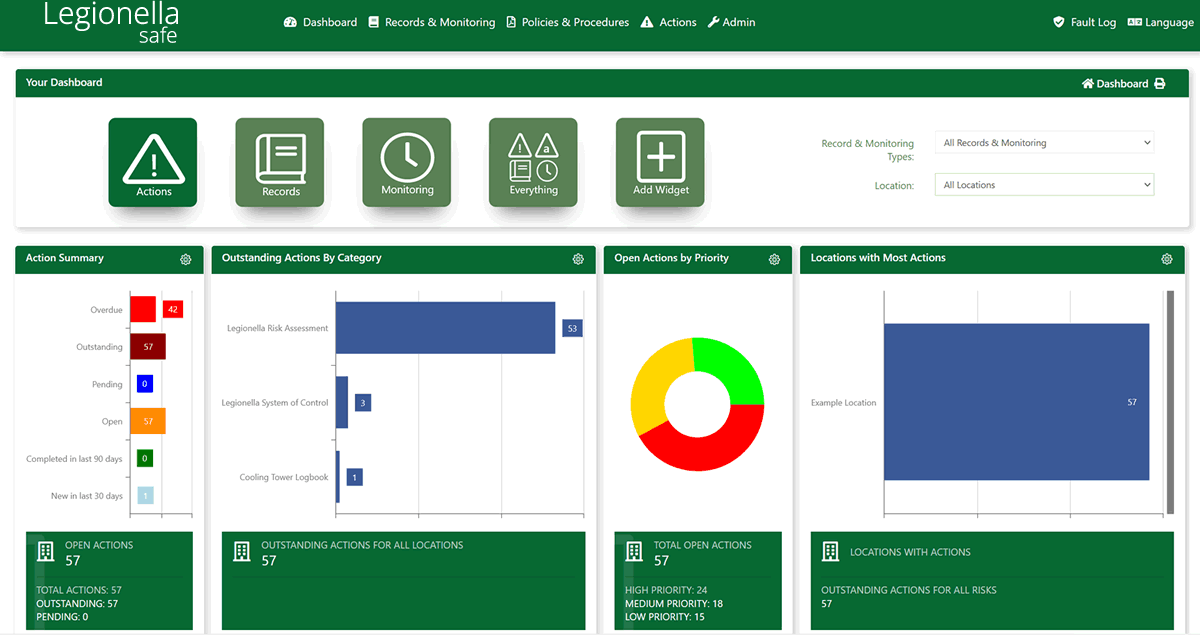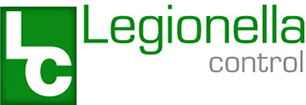Legionella Logbooks: Everything You Need to Know

A Legionella logbook is one of the most practical tools available for anyone responsible for managing water safety in buildings. Not only does it provide a structured way to document Legionella risk assessments, testing, remedial actions and maintenance, it also acts as clear evidence of compliance with health and safety law. Whether kept in paper or digital form, a well-maintained logbook offers reassurance that you are meeting your responsibilities in controlling Legionella risks, while also making it far easier to demonstrate your efforts to regulators, auditors, or other stakeholders when required.
In this article, we take a closer look at what a Legionella logbook is and why it matters, before exploring the key information it should contain, who is responsible for keeping it up to date, and how long records must be retained. We also consider the practical benefits of paper-based and software-based logbooks, and why many organisations find digital solutions more effective, particularly when managing larger or multiple properties. By the end, you’ll have a clear understanding of how to set up and maintain a Legionella logbook that supports both compliance and good practice in water safety management.
A version of this article about the importance of Legionella logbooks first appeared in Legionella Control International’s newsletter. To get it in your inbox, sign up here.
The importance of Legionella logbooks
If you know anything about Legionella bacteria and the responsibilities all business owners, health and safety managers and building operators have in ensuring they maintain safe premises, you may have heard of Legionella logbooks.
A logbook is one of the best tools you can use to ensure you follow and maintain a proper Legionella control regime. In this guide, we’ll look at logbooks more closely and see how they can help you ensure you are fulfilling all your legal requirements in this area.
What is a Legionella logbook?
A Legionella logbook is a record of risk management activities relating to the control of Legionella risks that may be present in a manmade water system. It includes everything from Legionella risk assessments, remedial actions, to the results of any water testing that has been done.

Do you need to maintain Legionella records?
UK health and safety laws state that if you employ five or more people, you must keep records of significant findings relating to a Legionella risk assessment. These records should also contain information about the risks identified by the assessment. You must also note what you have done to remove any risks, along with providing details of the steps you’ve implemented to reduce any other risks that cannot be removed.
You can see that you’re not required to keep records if you employ fewer than five people. However, in practice, most business owners find it easier to keep notes of some kind, so they have something to refer to. They’re also ideal to present in case of an inspection by a safety regulator, as they provide a physical record of what you’ve done to meet your Legionella requirements.
What should be in a Legionella logbook?
This type of logbook can include details of Legionella risk assessments, routine system checks, water testing, remedial works and basic maintenance tasks, along with details of when and where they were conducted or completed. In all cases, you should add as much detail as possible, to ensure you have the most complete record you can.
The logbook can also include information about any work undertaken by external contractors, such as hot water tank replacement or maintenance, for example. It should also contain details of any test results received.
You may find it prudent to include different sections, one for each topic. So, there may be a section on maintenance, another on risk assessments, and another on testing, including results, actions taken, and so on.
You should also make sure you have full and up to date schematic drawings of the water systems in place, including any changes or extensions that take place. As a rule of thumb, if in doubt, it’s best to include it.
It should also contain the names of key people who have responsibilities in water safety, such as the Duty Holder, the Responsible Person and their deputies, and members of the water safety team.
Who is responsible for maintaining the records in the logbook?
Appropriate record keeping is the responsibility of the Duty Holder or the Responsible Person. Depending on the building or location in question, this might be the employer or building owner. It could also be a local manager, but the individual should be deemed competent and fully aware of the water systems under their control, how they work, and what is required to maintain them.
It is possible to appoint another individual to perform the Legionella risk assessment and carry out various duties pertaining to Legionella and water safety. However, it will still be the responsibility of the Duty Holder to keep those records up to date via the logbook.

Why is it important to maintain an up-to-date Legionella logbook?
If you receive a visit from the Health and Safety Executive (HSE) or another safety regulator, you must be able to show what you have done to ensure water safety throughout the premises. If you’ve been using your Legionella logbook correctly then this will provide a full record of this, hence why keeping one is ideal even if you are not required to by law because you have fewer than five employees.
It will also show exactly when you conducted a Legionella risk assessment and when it is due to be repeated. You can also show the results of that assessment and the steps you have taken to remove risks where possible, along with reducing risks in other cases.
In short, everything you have done to meet your legal requirements regarding water safety, and the control of Legionella bacteria (and other waterborne bacteria) is there in one place. It makes life easier for you and provides a body of proof that shows your efforts to meet all relevant legislation.
What sort of Legionella logbook works best?
You can choose a paper-based version if you wish or go for a software-based version such as the popular, fully featured LegionellaSAFE which can be accessed securely via the Internet, and on multiple devices if desired. Software Logbooks do have some useful advantages, namely that you can access them from anywhere with an Internet connection, not just on the site in question as is the case with paper versions. They will also create a digital audit trail that identifies who accessed and updated the logbook and when they did it. This can be useful in proving when the last risk assessment was undertaken and who did it, for example.
Paper-based versions have their limitations, especially since they can only be accessed in one place. There is always a risk of them going missing, especially if multiple people are responsible for updating them, depending on their roles. Software solutions are also useful if the Responsible Person is managing a large or geographically disperse property portfolio where it may not be possible to visit each site quickly.

How long do you need to keep your logbook records for?
The first thing you need to know about is the importance of keeping all current records. For instance, if you keep records relating to your current hot water tank, you should keep and maintain those records for as long as you have that tank. If you replace it, you must keep the records for a minimum of two years past that point.
The HSE also states that records that form part of any inspection should be kept for a minimum of five years.
In conclusion
Keeping an accurate Legionella logbook is about more than ticking a compliance box, it’s about having a reliable framework in place to protect people and demonstrate that water safety is being properly managed. However, navigating the detail of risk assessments, monitoring tasks and record keeping can be complex, which is where expert support can make a real difference.
Even if you only employ a couple of people and therefore have no legal need to keep and maintain a Legionella logbook, you can see how useful it is to have one. It also means that if you expand your business and employ more people, you’re already set up and can continue your Legionella logbook records to ensure you remain compliant with health and safety law.
Leading Legionella and water safety specialists
At Legionella Control International, our specialists help businesses of all sizes set up and maintain robust water safety regimes, from carrying out detailed risk assessments through to providing practical advice on logbook management and digital solutions. If you’d like guidance on ensuring your organisation remains fully compliant while maintaining safe, healthy premises, our team is here to help.
To discuss your requirements with one of our water safety experts, call us today on 0330 223 36 86.


